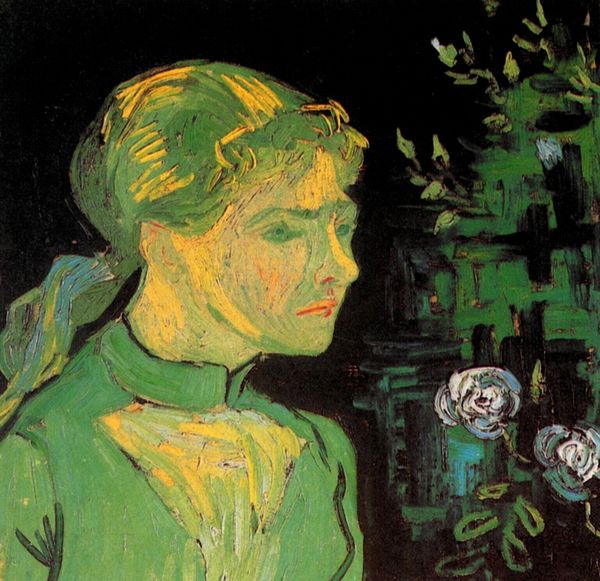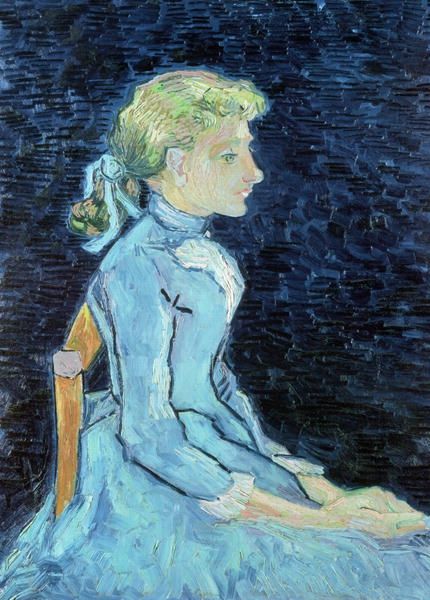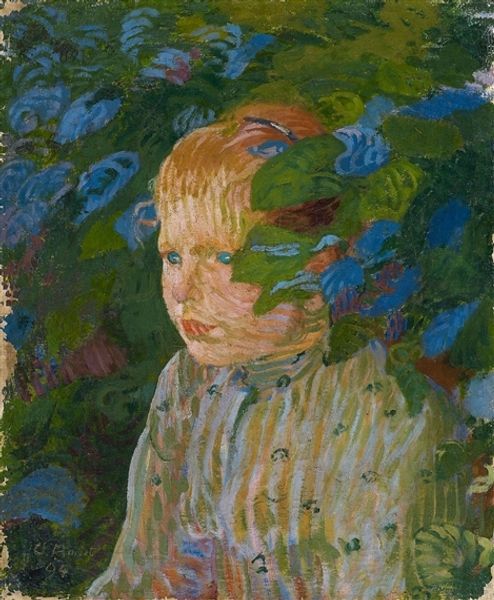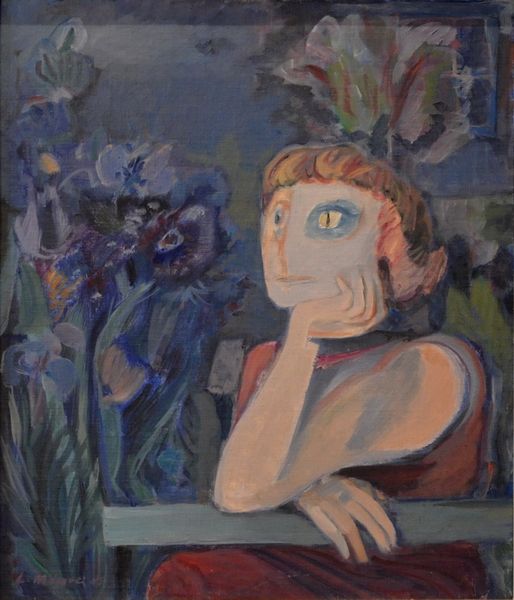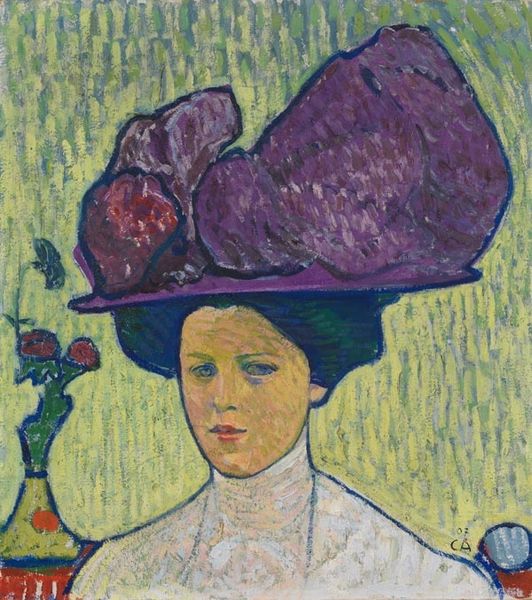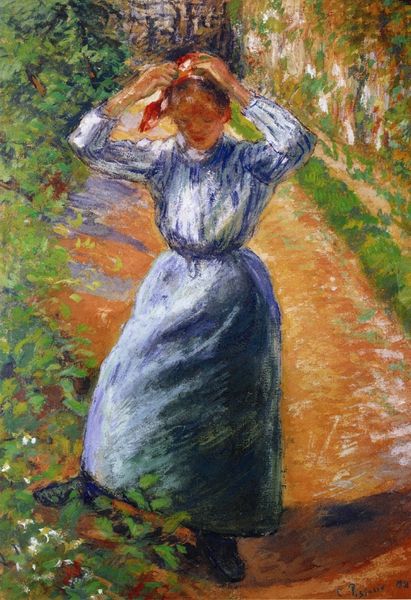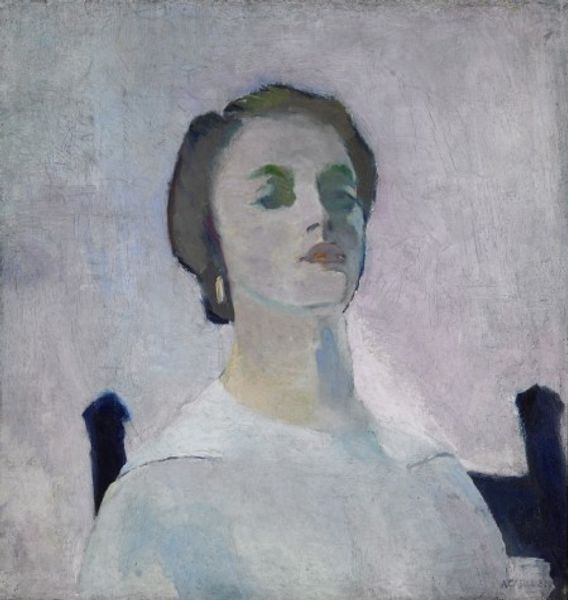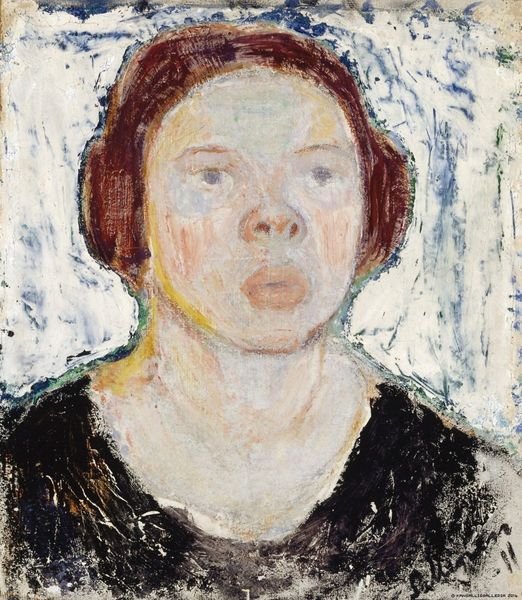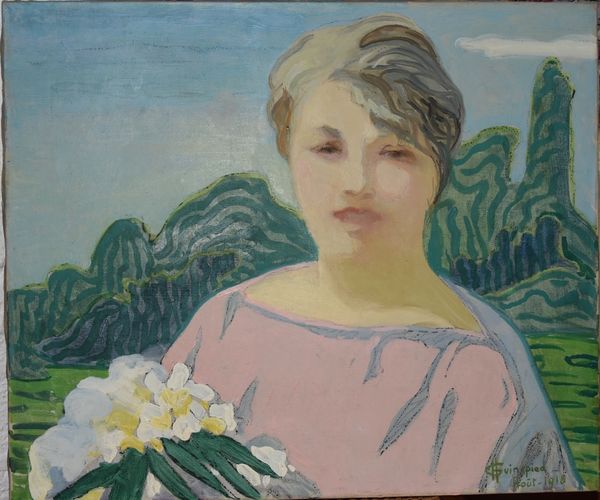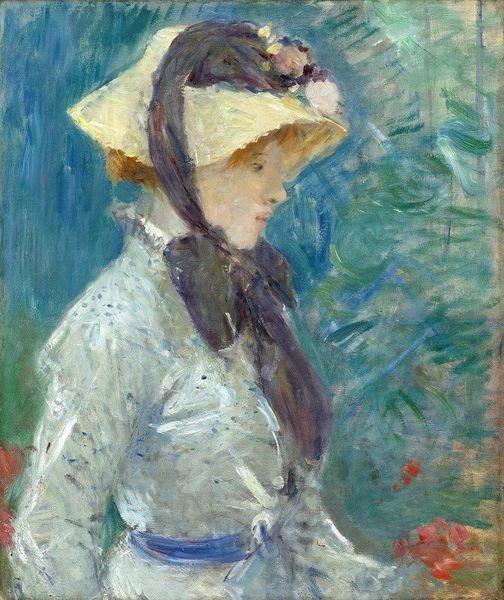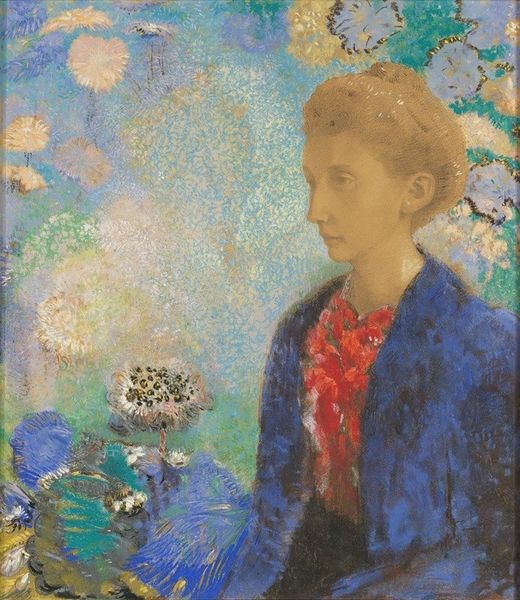
oil-paint
#
portrait
#
figurative
#
oil-paint
#
oil painting
#
expressionism
#
post-impressionism
#
portrait art
#
expressionist
Copyright: Public Domain: Artvee
Editor: This is Vincent van Gogh's "Adeline Ravoux," painted in 1890, using oil paint. The impasto is incredible; you can really see the texture and movement. It has this almost melancholic mood, what stands out to you? Curator: The application of paint is indeed striking, demonstrating Van Gogh’s mastery of the medium. The heavy impasto and distinct brushstrokes build not just the figure of Adeline but also the very structure of the painting. Do you notice how the chromatic intensity fluctuates, influencing your perception of depth and form? Editor: Yes, the contrasts, especially in her face, create shadows and highlight her features, the composition feels very modern. What's the significance of that? Curator: It goes to the core of Expressionism. Forms are distorted to communicate intensity, emotion and, most importantly, sensation. Van Gogh renders Adeline through intensely felt brushwork and vibrant colors, using this approach to build and convey more about the internal than the external reality. See how line, shape and hue independently deliver meaning, superseding Adeline’s form? Editor: It’s like the emotional charge of the paint becomes the subject. Is that why we call it expressionistic? Curator: Precisely! Van Gogh manipulates visual elements beyond representational likeness, foregrounding subjective expression. So, considering this focus on intrinsic visual components and emotional resonance, what would you say is the ultimate subject matter here? Editor: That's fascinating, looking beyond just a portrait. It makes you consider the emotions held within that brushwork. Thanks for offering your insight. Curator: And thank you for your astute observations.
Comments
No comments
Be the first to comment and join the conversation on the ultimate creative platform.
